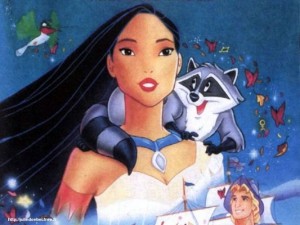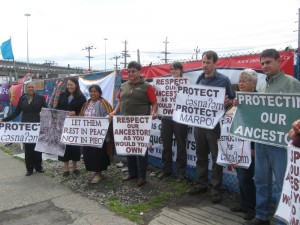Category — Module 2
Nurturing the Learning Spirit of First Nations Students
Nurturing the Learning Spirit of First Nations Students is a “Report of the National Panel on First Nation Elementary and Secondary Education for Students on Reserve.” The panel, as listed in the report, has three members, all of whom have been involved in Indigenous education, but only one of which is Indigenous himself. However, the report caught and held my attention because of its emphasis on recognizing and valuing traditional Indigenous knowledge. It draws the distinction between the piece of paper (graduation certificate) that says we are educated compared to the education we receive from our parents and community.
“My dad learned different things and the different skills that are not recognized by a piece of paper. I am proud of my dad and I’m learning from him. And I cannot learn this from my teacher. … The only difference between the two types of education that I have discussed is that one is recognized and one isn’t. We need papers behind our names to live in today’s world but we still need those traditional teachings to learn who we are and where we come from.” (Page ii)
October 5, 2012 No Comments
Native American Complexity
Computation, Complexity and Coding in Native American Knowledge Systems by Ron Eglash
I found this article/paper interesting because it delves deeply into the science and mathematics of a number of Native American peoples. This is background knowledge that is useful to me as an upper level math teacher as I can use the examples authentically in class and tie them in to the curriculum. I also found this article interesting because it begins with a discussion of stereotypes and assumptions that are common in the portrayal of Native Americans. The following is a quote from the first paragraph:
“We see these assumptions at work in many popular television documentaries, where one hears of the “vanishing native” who “lived at one with nature.” … We need to take special efforts to open our eyes to the dynamic histories and technological sophistication of indigenous cultures–for example, to think about active indigenous ecological knowledge rather than the passive portraits we so often hear, e.g. “Indians lived as part of the ecosystem.” ” (Eglash, 2002)
I think it is important to fight the common stereotypes by contradicting them with information about how sophisticated Indigenous knowledge systems were (and are), in a way that places those systems in context and respects the values associated with them. This article dovetails with my research interests and with the emphasis of Module 2.
Reference:
Eglash, Ron. “Computation, Complexity and Coding in Native American Knowledge Systems.” in Judith Hankes and Gerald Fast (ed) Changing the Faces of Mathematics: Perspectives on Indigenous People of North America. Reston, VA: NCTM 2002. Retrieved online at: http://homepages.rpi.edu/~eglash/eglash.dir/nacyb.dir/nacomplx.htm
October 5, 2012 No Comments
You can’t just “add culture and stir”
The title of this post is a quote from the paper How to tell the difference between multicultural mathematics and ethnomathematics (Eglash, 2001). The paper is from the NCTM 2001 national meeting and identifies the difference between adding trite, multicultural comments into mathematics questions and truly understanding the idea of ethnomathematics. The goal of ethnomathematics is to place mathematics learning in authentic contexts for specific populations. The paper is written from the perspective of ethnic minorities in the United States, however it extrapolates well to the discussion of mathematics and Indigenous students. The paper states that:
“… ethnomathematics directly challenges the cultural stereotypes and genetic myths most damaging to both minority and majority ethnic groups.” (p. 2)
October 4, 2012 No Comments
Does Math Education … Devalue Indigenous Culture?
This research paper, Does Mathematics Education in Australia Devalue Indigenous Culture? Indigenous Perspectives and non-Indigenous Reflections (Baturo, Cooper, Matthews & Watego; 2005) has a unique perspective. Two of the researchers are Indigenous people and two of the researchers are not. The paper is written using two different fonts – each font representing one of the perspectives. The paper states that:
“… it is likely that a stereotypical belief in the primitiveness of Indigenous culture is the driving force behind the actions of mathematics teachers, educators and researchers who work in Indigenous communities” (p. 514)
I need to read and review this paper in greater depth, but I feel that it matches both my research interests and the emphasis of Module 2 on stereotypes.
October 4, 2012 No Comments
Disney’s [com]modification of The Indian
 For many of us, Walt Disney cartoon movies have been one of the dominant experiences of childhood. Many children have enjoyed Dumbo, 101 Dalmations and Lady and the Tramp. But cartoon treatment of the American Indian has not been kind. The portrayal of Indians in 1953’s Peter Pan is hardly complimentary, and 1995’s Pocahontas is not much better. Surprisingly, the Native Peoples are shown to have a connection with the land and the White Man is seen as shown inept and clueless invaders. While this may be palatable to some, the character of Pocahontas still places herself in the power of the very white John Smith – a symbolic surrender of one people to another. This traditional connection to the land (see Marker, Michael, Teaching History from an Indigenous Perspective: Four Winding Paths up the Mountain) ” is “Disneyfied” and given the Western “mystical Indian” treatment with some cute little animal friends and an ancient grandmother tree that carries on conversations with our Indian Princess. Disney based this on true historical events, but the reality of this story is much less kind, with a 12 or 13 year old Pocahontas captured by the British, held in the boat for a year, and then transported back to England. But that wouldn’t have made as good a movie…
For many of us, Walt Disney cartoon movies have been one of the dominant experiences of childhood. Many children have enjoyed Dumbo, 101 Dalmations and Lady and the Tramp. But cartoon treatment of the American Indian has not been kind. The portrayal of Indians in 1953’s Peter Pan is hardly complimentary, and 1995’s Pocahontas is not much better. Surprisingly, the Native Peoples are shown to have a connection with the land and the White Man is seen as shown inept and clueless invaders. While this may be palatable to some, the character of Pocahontas still places herself in the power of the very white John Smith – a symbolic surrender of one people to another. This traditional connection to the land (see Marker, Michael, Teaching History from an Indigenous Perspective: Four Winding Paths up the Mountain) ” is “Disneyfied” and given the Western “mystical Indian” treatment with some cute little animal friends and an ancient grandmother tree that carries on conversations with our Indian Princess. Disney based this on true historical events, but the reality of this story is much less kind, with a 12 or 13 year old Pocahontas captured by the British, held in the boat for a year, and then transported back to England. But that wouldn’t have made as good a movie…
October 1, 2012 No Comments
Condo Developers vs. Musqueam
Vancouver: Sept. 29, 2012
Today was a good day for the Musqueam, but not such a good day for Vancouver’s Century Group. A final decision was made today in Vancouver to not issue another permit extension to the condominium developers. After human remains were found in the Marpole Midden site in January, the Musqueam Band have been keeping a long vigil to protect the ancient burial ground.

Picture from Straight.com. Amnesty International Canada meeting participants stand alongside Musqueam protesters. (Carlito Pablo)
Media and bias: Viewer beware!
This is a very tricky situation. Both sides of the issue seem understandable. It is difficult to view the situation without some element of bias. Depending on who is interviewed, or even which media personage files a report, one side or the other appears to be more or less reasonable. This is the power of the Fourth Estate; while supposedly presenting an unbiased view of purely objective facts, bias catches the consumer unawares and allows situations to become muddied and contentious.
Certainly the developers have spent a lot of money purchasing the land, engineering plans, and preparing to build this large-scale project. But the Musqueam have rights here: an ancient burial ground on their traditional lands should not be desecrated. The prospective developers Century Group wonder how or if they can be compensated for their loss. The Musqueam may be able to strike a deal to purchase the lands. See the story here http://bc.ctvnews.ca/musqueam-win-battle-against-marpole-development-1.977247
September 29, 2012 No Comments
